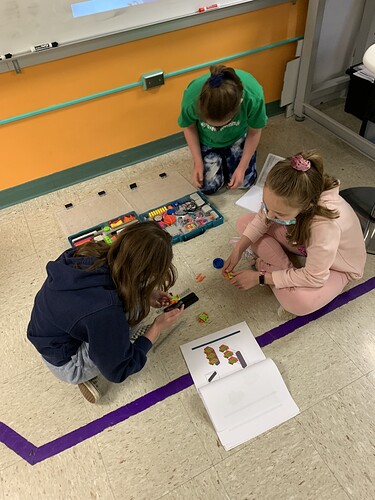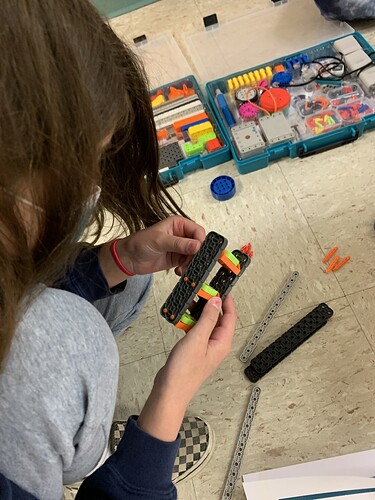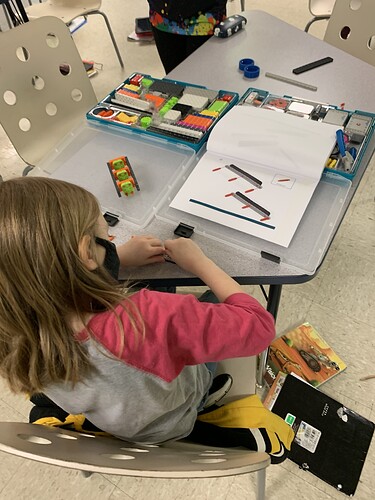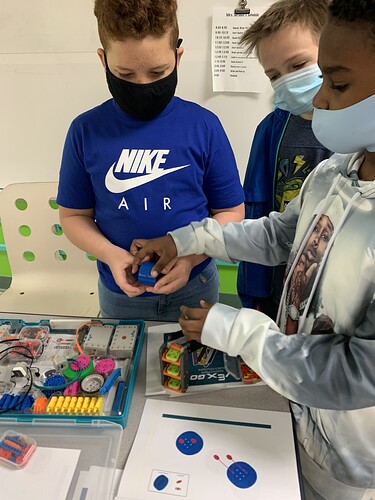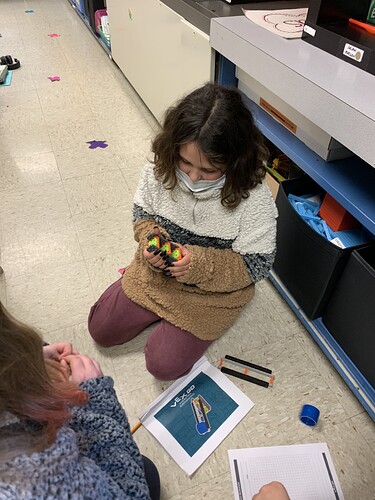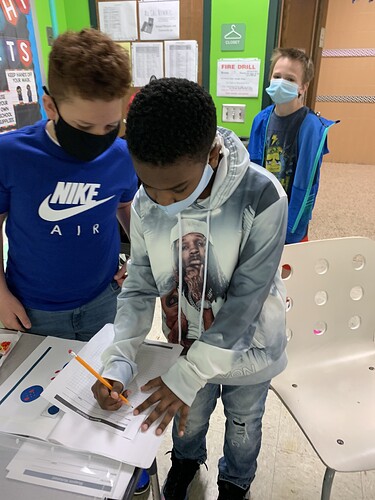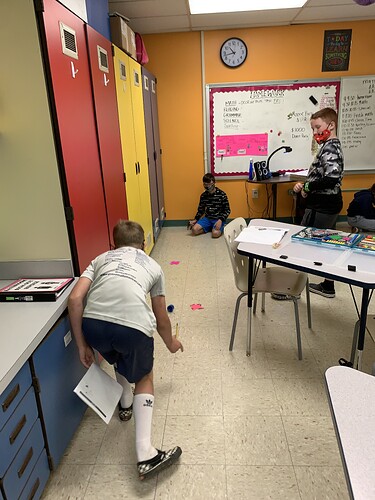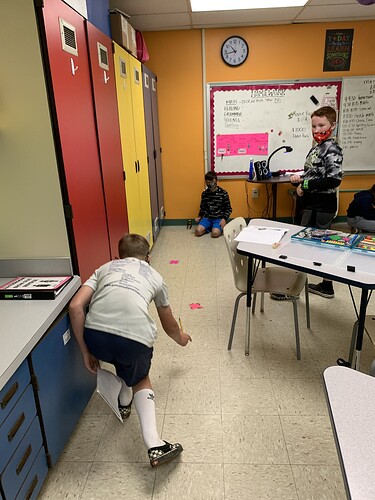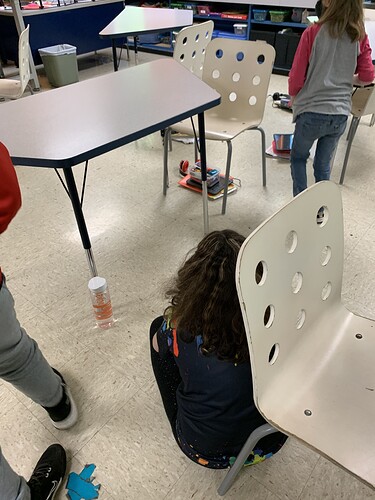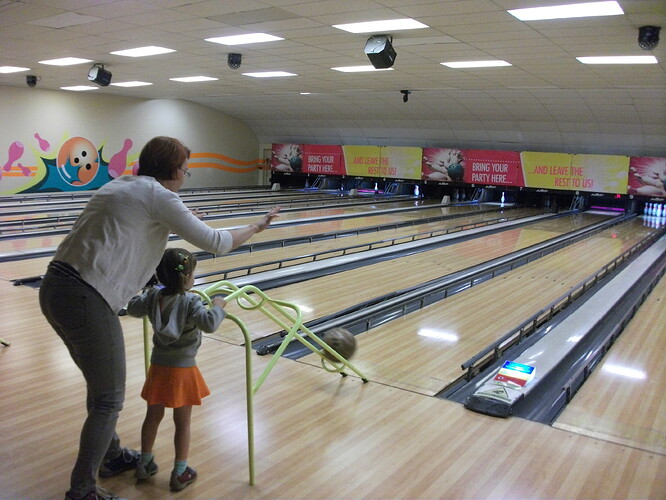I wanted to start a topic here about Simple Machines.
My colleague, the 4th grade teacher was so infatuated with the Inclined Plane STEM Lab. We are planning to coteach an integrated lesson with her science
curriculum next year. I’m interested in any of your ideas that you’ve had success with integrating this unit into a science curriculum.
I taught this lesson 3 times in my Computational Thinking and Computer Science class which is great because I can see what the kids were the most fascinated with. For the first lesson, I didn’t really change anything on the STEM Lab and kids loved testing out the inclined plane but they started to ask so many questions about where inclined planes would be used in real life. I told them I would do some research and we would explore this more.
For my lesson with the 2nd set of 4th graders, I talked about where different inclined planes would be based on what the STEM Lab provided in the hook and how we can use them today.
And then all of sudden students wanted to know how engineers use incline planes. It’s a fascinating idea! I really hadn’t thought of this before and I had the kids research for the final 5 minutes of class.
For my lesson with the 3rd set of 4th graders, I found that these kids had already spoken to the other two classes and were beyond excited to learn how to use this simple machine. These students had thought of ways inclined planes could be used like for example in an Amazon warehouse where packages would slide down and eventually go into an Amazon truck.
With this idea - I knew that I could use this authentic connection for next year’s class and make this into a career, science, and robotics integrated lesson.
At the end class, students wanted to present their “best idea” for the new Amazon warehouse and how their prototype showed the best results. Very interesting and so far reaching for a small STEM Lab that really took on a life of it’s own. I love how much creativity one activity can create.
Please add any of your thoughts or experiences using Simple Machines. I’ll keep adding here as well as I continue the unit. See the pictures below!
3 Likes
@Anna_Blake This is terrific. Thanks so much for sharing. Great to hear how you are incorporating this into your science class, and also hearing the questions form the students.
@Anna_Blake I love how you took the time to let this lesson grow organically! I also think it’s particularly fun and intriguing that the Inclined Plane captured the kids’ attention so dramatically. One of the first things I thought of when I first saw this build was a bowling ramp thing that I remembered using as a kid -
Could be an interesting connection as part of a hook or intro, as kids are trying to think of “real life” inclined planes that they have access to.
2 Likes
Thank you for sharing all the great pictures. I love it when students go viral with excitement over learning by telling other sections what fun to expect in class. I recently did a Rube Goldberg Challenge with an 8th grade science class, in which inclined planes are a staple. GO robots could be combined with Rube Goldberg machine concepts to create a cascade of machines. I have seen students incorporate the vibration of a phone as an activator in these machines, mixing modern tech with foundational science concepts.
1 Like
Thanks for sharing @Moira_Dunn! I do love a good Rube Goldberg challenge and I agree, it’s a great way to incorporate one or many simple machines 
Speaking of Rube Goldberg, I just wanted to share this Tweet from @Omar_Cortez on some projects his kids made with VEX IQ. Thanks for sharing Omar! 
https://twitter.com/MrCortezRobotic/status/1631005835114545175?s=20
1 Like
I plan on using the Simple Machines STEM Lab next month. Prior to having Vex Go in the classroom, I would challenge the kids to make a video at home of examples of simple machines being used in real life. I always got a nice variety of videos. I plan on doing that at the culmination of the STEM Lab this year. I will post a few then.
@Tina_Dietrich that would be wonderful! I’ll be excited to see them 
@Anna_Blake @AudraSelkowitz @Lauren_Harter After I complete my simple machines unit I always challenge the students to create a video of themselves showing/talking about the simple machines they can find around their house. My only requirement is to be creative! I attached a link to a folder to see a few from this year.
https://drive.google.com/drive/folders/15WrPCuwKm2Q3KadcwYXk6ukAFf9wsiBB?usp=share_link
2 Likes
This is amazing @Tina_Dietrich! Would you be able to make the google drive folder view only so I can see it? How exciting! 
@Lauren_Harter I believe I fixed it. The videos were too big to upload separately. Let me know if it works…Enjoy!
@Tina_Dietrich these are incredible!! Thank you so much for sharing!  I love all of the examples the kids used. Simeon in the suit with the microphone was one of the cutest things I’ve ever seen! What an amazing project to allow kids to show off their creativity.
I love all of the examples the kids used. Simeon in the suit with the microphone was one of the cutest things I’ve ever seen! What an amazing project to allow kids to show off their creativity.
1 Like
@Tina_Dietrich Wow! These videos totally made my morning! What a great way for your kids to share their learning  Thank you so much for sharing!!
Thank you so much for sharing!!
1 Like
Hi @AudraSelkowitz! We’re beginning the Incline Plane build tomorrow and I love your example of the bowling ramp! This is a great activity to create a web out of and have the students brainstorm additional examples of inclined planes that they see in the real world and making those connections!!
Hi @AudraSelkowitz! I created an organizer last night for students to search for examples of inclined planes online to activate their prior background knowledge. Then, students can pair up to discuss what they found. @Tina_Dietrich @Desiree_White-Price @Anna_Blake
That’s awesome, @Danielle_McCoy ! I can’t wait to see what your students do with the Simple Machines STEM Lab!
That’s awesome! That organizer could also be repurposed for sooooo many different lessons! It could be neat to also have kids fill in only one example that they think of, then complete the other two by talking to other students and populating the examples with the collective knowledge of the class.
